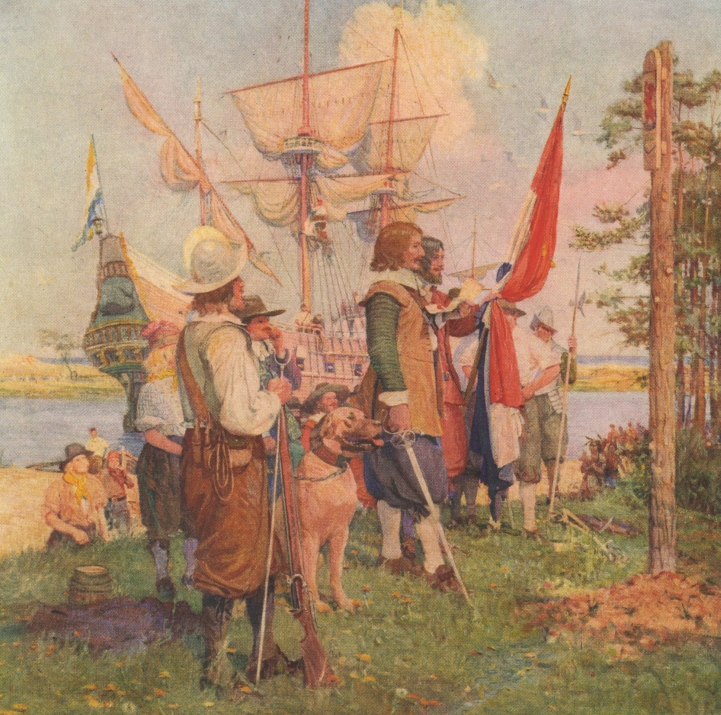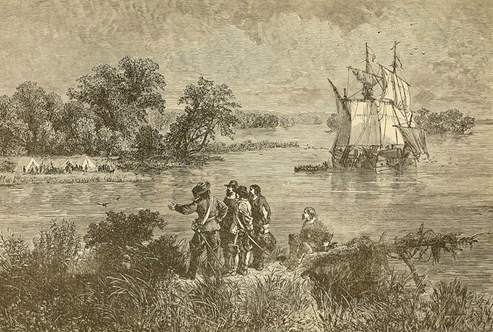Lewes: Are the roots Dutch or English?
Lewes may be the First Town in the First State, but its beginnings are anything but auspicious. The town’s Dutch heritage took several attempts to get established, and even then it was short-lived. The original Dutch settlement in 1631 only lasted a few months before being destroyed by Siconese Indians. And four decades later, Delaware was part of Pennsylvania under British rule until the United States won independence in 1776. The name Lewes comes from an English town in East Sussex. The first European explorer credited with discovering the Delaware Bay area was Henry Hudson, a Brit who was financed by the Dutch.
In reality, many Lewes-area residents can lay claim to English roots, not Dutch. But, the answer to the question in the headline is the accepted history of the Dutch being first.
As with any history, there are a few discrepancies here and there. And Capt. David Pieterson DeVries, the most prominent figure in the settlement, is better known today for a street in Lewes – DeVries Circle.
The first European settlement in Delaware was established June 3, 1631, by the Dutch West India Company on land purchased from the Siconese Indians, and was named Swanendael (Valley of the Swans) on Hoorn Kill (Lewes Creek). A memorial on Pilottown Road marks the spot of the first settlement along the Rehoboth-Lewes Canal near the University of Delaware complex.
DeVries, a member of a prominent Dutch merchant family, funded and outfitted the expedition. A statue of DeVries sits atop the Zwaanendael Museum.
Ill-fated colony
The ship Walvis with 30 colonists sailed from the Netherlands to the New World to establish a whale-hunting station and farming settlement to grow tobacco and grains.
A fort was constructed to protect the settlement, and the Dutch coat of arms was prominently displayed atop its gate.
That coat of arms would end up playing a very key role in the demise of the settlement. History books use the term “misunderstanding” when they describe the eventual attack and massacre of the settlement’s occupants by the Siconese.
Historical accounts claim a tribe member stole the coat of arms, which not only upset the Dutch but also the leaders of the tribe, who were trading with the settlement.
The thief was killed by tribal leaders and his head was presented to the Dutch. That action so infuriated the friends of the slain member that they blamed the settlers and attacked the fort.
English take control
The Dutch returned to the area to build another fort and set up a trading post in 1659 called Sikeomess or Sekonnessink. A Dutch Mennonite colony of 41 was also established. As is a recurring theme in the early history of Lewes, both settlements were short-lived. In 1674, the English took control of the Delaware River and all settlements.
Following 1631-32:
1638 – Swedes under Peter Minuit establish Delaware’s first permanent settlement, Wilmington. Colonists arrive in the ship Kalmar Nyckel. A replica is now Delaware's official tall ship.
1659 – Swanendael is refortified by the Dutch, leading to the settlement of Lewes, which is known as Hoerenkill by the Dutch and later Whorekill by the English.
1663 – Mennonite colony is established under Pieter Cornelisen Plockhoy as 41 colonists arrive from Amsterdam on the ship St. Jacob.
1664 – Forces from the English Duke of York seize Dutch holdings in New Netherlands, including the Plockhoy colony.
1673 – On Christmas Eve, Whorekill is raided, and houses and buildings are burned by Lord Baltimore’s soldiers from Maryland. At the time, 47 residents lived in the village.
1673-74 – After a brief stint as a Dutch colony, England takes possession by Treaty of Westminster in 1674. Many Dutch settlers remain and contribute to the development of the new English colony.
1680 – Village and county are known for two years as Deale or New Deale.
1682 – William Penn arrives from England as proprietor of Pennsylvania and the three lower counties in Delaware. It's Penn who names Lewes and Sussex County after locations in England. Penn also authors the Warner Land Grant designating the area in and around Cape Henlopen for the people of Lewes.
First explorer – English explorer Henry Hudson sailed up Delaware Bay in August 1609. His explorations led to the establishment of New Netherlands, which included the states of Delaware, New Jersey and New York. He was under contract by the Dutch East India Company to find the Northwest Passage to the Far East.
The museum – The Zwaanendael Museum is the most obvious symbol of the Dutch influence on Lewes. Constructed in 1931 to commemorate the 300th anniversary of the settlement of Lewes, it's a replica of the former city hall in Hoorn, the Netherlands, where many historic homes also mirror the design.
Have you noticed the unicorn above the door to the museum? It’s also above the door inside the museum. It’s part of the coat of arms of Hoorn (Dutch for horn), which dates back to the 1300s. The unicorn was considered a Christian symbol approved by the church at the time. The unicorn has become a symbol of the town similar to the dolphin in Rehoboth Beach.
Hornkill Avenue along Pilottown Road in Lewes is another reminder of the Dutch. It’s also a street that has houses in city limits and houses in the unincorporated area of Sussex County.
What’s in a name? Lewes has had its fair share of names, being called Swanendael and Hoorn by the Dutch, and Whorekill and Deale by the English. Even after the name was changed to Lewes, the town was also known as Lewestown or Lewistown.





























































